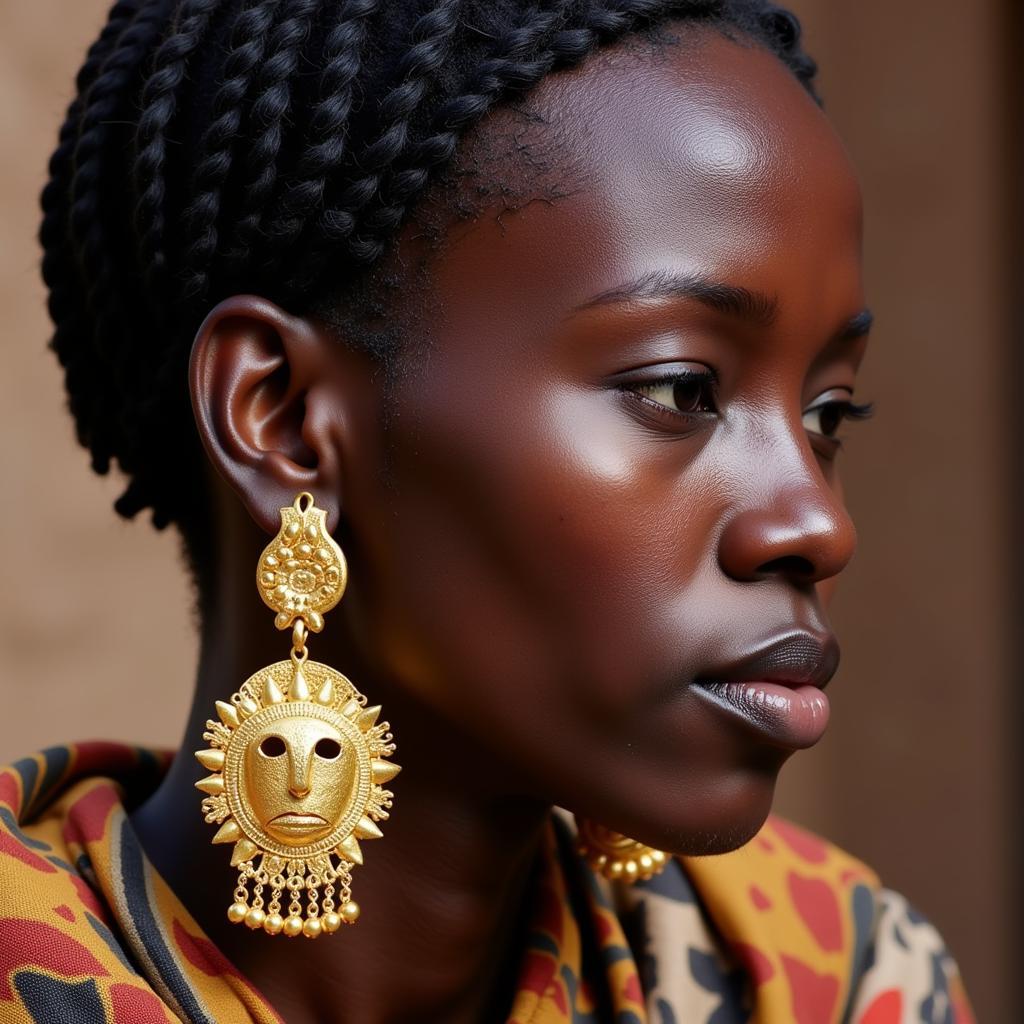The African Houbara: A Majestic Bird of the Desert
The African Houbara (Chlamydotis undulata) is a large, majestic bird found in arid and semi-arid regions of Africa and the Arabian Peninsula. This iconic bird is known for its striking appearance, with a distinctive crest of feathers on its head and a long, flowing tail. The houbara is a true desert dweller, adapted to survive in harsh environments with limited water and vegetation. Let’s delve into the fascinating world of this remarkable bird, exploring its biology, behavior, conservation status, and cultural significance.
Understanding the African Houbara: Biology and Behavior
The African houbara is a member of the bustard family, which includes some of the world’s largest flying birds. This species is typically 55-65 cm in length with a wingspan of 1.2-1.5 meters. Male houbaras are larger and more colorful than females, sporting a distinctive black and white plumage with a prominent crest of feathers on their head. Their powerful wings and light body allow them to soar effortlessly over the vast desert landscapes.
Houbaras are primarily terrestrial birds, spending most of their time foraging for food on the ground. Their diet consists mainly of seeds, insects, and small reptiles. They are known for their ability to survive without water for extended periods, relying on the moisture content of their food and the dew that condenses on plants during the cooler nights.
During the breeding season, which usually occurs in spring, male houbaras engage in elaborate courtship displays to attract females. These displays involve strutting, bowing, and inflating their air sacs to produce a booming call that echoes across the desert. The female houbara lays 2-3 eggs in a shallow nest on the ground, which she incubates for approximately 25 days. The chicks are precocial, meaning they are able to walk and forage for food shortly after hatching.
Conservation Status and Threats to the African Houbara
The African houbara is listed as “Near Threatened” by the International Union for Conservation of Nature (IUCN), meaning that it faces a significant risk of becoming endangered in the future. Several factors contribute to this precarious status, including habitat loss, hunting, and climate change.
Dr. Fatima Abdi, a leading ornithologist and conservationist specializing in desert bird species, says:
“The African houbara’s habitat is increasingly fragmented and degraded due to human activities such as urbanization, agriculture, and overgrazing. This leaves the houbara with fewer suitable places to breed and feed.”
Illegal hunting for meat and traditional medicine is also a major threat to the houbara population. In some regions, the houbara’s eggs are considered a delicacy, leading to overexploitation of breeding populations.
Climate change is another challenge facing the African houbara, as rising temperatures and changes in rainfall patterns can disrupt breeding cycles and reduce the availability of food resources.
The Cultural Significance of the African Houbara
The African houbara holds a significant place in the cultures of many desert communities. It is often depicted in traditional art, literature, and folklore, symbolizing strength, resilience, and freedom.
Mohammed al-Saadi, a Bedouin storyteller and elder, shares:
“The houbara has always been a source of wonder and inspiration for our people. Its ability to navigate the desert and survive in harsh conditions is a testament to its strength and resilience. We learn from the houbara to persevere and overcome challenges.”
In some regions, the houbara is also associated with religious beliefs. For example, in some Islamic traditions, the houbara is considered a symbol of divine guidance and wisdom.
Conservation Efforts for the African Houbara
Recognizing the importance of protecting the houbara, several conservation organizations and governments have implemented initiatives to address the threats facing this species. These efforts include habitat restoration and protection, anti-poaching campaigns, and research to improve our understanding of the houbara’s ecology and behavior.
Dr. Abdi emphasizes the importance of community engagement:
“Protecting the houbara requires a collaborative approach. We must work with local communities to promote sustainable land use practices, educate them about the importance of conservation, and provide alternative livelihoods that do not rely on the exploitation of this valuable species.”
What You Can Do to Help
Even though the African houbara is a remote species, you can still contribute to its conservation. By supporting organizations that work to protect this bird and its habitat, you can help to ensure its future. Consider donating to conservation organizations, spreading awareness about the houbara’s plight, and advocating for responsible land use practices.
FAQ
What is the houbara’s unique adaptation to desert life?
The houbara has developed several adaptations for survival in the desert. These include its ability to survive without water for extended periods, its strong legs for running and foraging, and its distinctive crest of feathers that help regulate body temperature.
Why is the African houbara important to the desert ecosystem?
The African houbara plays an important role in the desert ecosystem. It helps to disperse seeds, control insect populations, and serves as prey for larger predators. Its presence is an indicator of a healthy and balanced ecosystem.
What are the challenges to conserving the African houbara?
The African houbara faces numerous challenges, including habitat loss, hunting, and climate change. Addressing these threats requires a multi-pronged approach, including habitat protection, community engagement, and sustainable land use practices.
What is the future of the African houbara?
The future of the African houbara depends on the effectiveness of conservation efforts. By working together, we can help ensure that this majestic bird continues to grace the deserts of Africa and the Arabian Peninsula for generations to come.
Where can I find more information about the African houbara?
You can find more information about the African houbara by visiting websites of conservation organizations such as the International Union for Conservation of Nature (IUCN) and BirdLife International. You can also search for scientific papers and articles on online databases like Google Scholar.
For more information, contact our customer service team at +255768904061, kaka.mag@gmail.com or visit us at Mbarali DC Mawindi, Kangaga, Tanzania. We offer 24/7 customer service.


